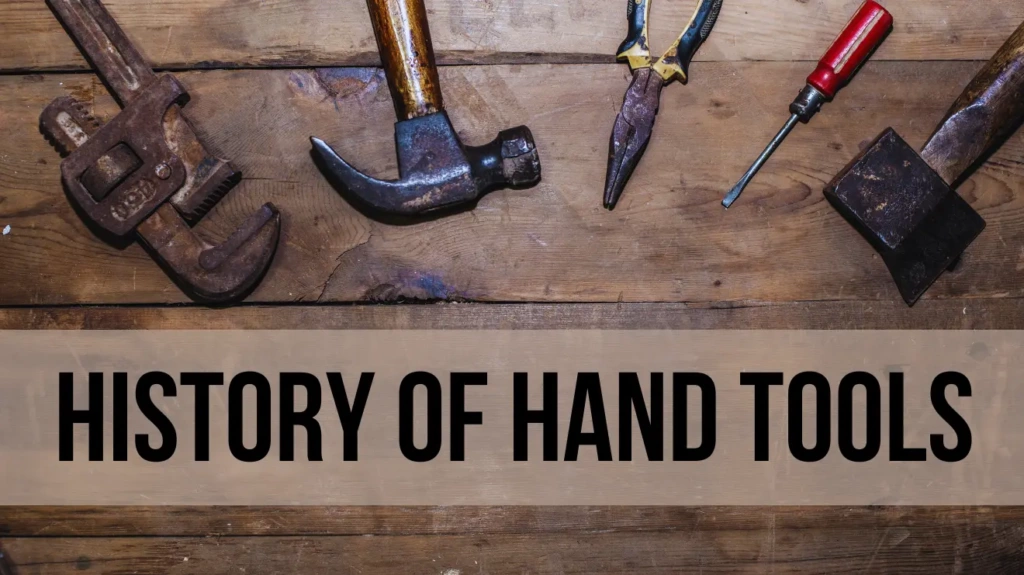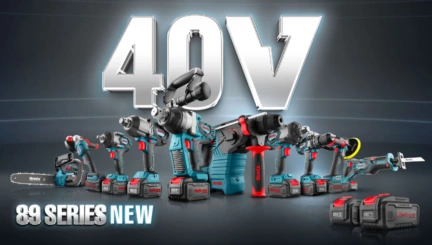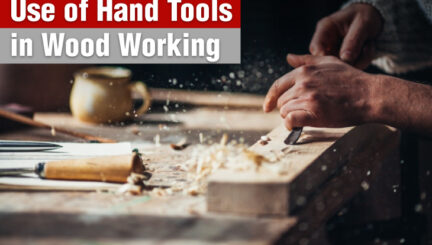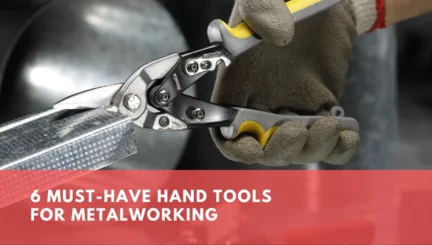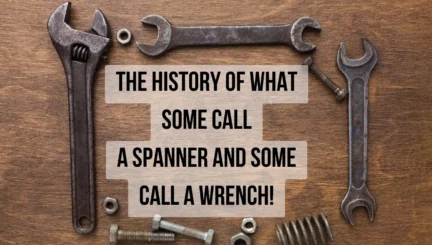- 10min
- 18860
- 0
When talking about the history of hand tools, some images probably come to mind: weirdly shaped stones, sticks, and even bones. As one of the primary needs of the first men was to eat and survive, if they were to devise any tool, it would have been for hunting and defending. You can still imagine, right? Sharp stones and pieces of wood, or even primitive daggers made with animal bones.

You might have seen different lists of the most revolutionary inventions of history, that changed the lives of human beings to a considerable extent such as the history of hand tools. But the red carpet for almost all the changes and evolutions throughout history were tools and to be a bit more appreciative, hand tools. The earliest known tool has been dated to 3.3 million years ago in the middle of the Pliocene Epoch in Kenya, which was implemented to shape raw materials into the desired form.
Evolution of Hand Tools
As we’ve mentioned, the first use of tools for the first men was to hunt and defend. But as men evolved, so did their implements. The demands for a settled way of life led to the transformation of tools to higher degrees.

Over time, the primary tools have been redesigned and perfected to serve people in every household. Nowadays, although the rate of change has fallen, hand tools evolution is still in motion and it has never stopped. The only difference is in the form of this change. Modern hand tools lean more towards improving than transforming. Therefore, you won’t see any newer ones and only higher-quality ones.
From the ones used to skin animals and prepare food to today’s most precise and practical ones, tools have made giant strides in human culture and civilization throughout history. They are utilized by quite everyone in manual operations, such as chopping, chiseling, sawing, filing, or forging, and in different industries, such as gardening, carpentry, metalworking, etc.
Complementary tools, often needed as auxiliaries to shaping tools, include such implements as the hammer for nailing and the vise for holding. A craftsperson may also use instruments that facilitate accurate measurements: the ruler, divider, square, and others. In this article, we throw a glance at the history of hand tools.

Who Invented the First Hand Tools?
You already know about the first tools but who invented them? Does hand tools history even tell us this? The answer is actually no. Since the first hand tools predate recorded history, there’s no known evidence to show who invented the first hand tool. But what matters in the evolution of hand tools is the point where humans decided that natural objects were not enough to satisfy their needs and they had to build tools. Gradually, the hand tools industry history shows that they advanced and became more and more complicated over time.
When Was the First Hand Tool Invented?
The same reason why we don’t have any evidence of the people who invented the first hand tools leaves us in the dark when talking about the time it was invented. We know that early humans from hundreds of thousands of years ago, during the Paleolithic era, used the first versions of tools called Oldowan tools. They were basically chipped-away stones used for cutting and scraping.

Now that you know the overall hand tools evolution, let’s discuss a list of ancient hand tools.
History of Gardening Hand Tools
The food demand after the settlement of human beings made them bring their creativity into farming and start harvesting hay and grain. This paved the way for developing gardening tools.
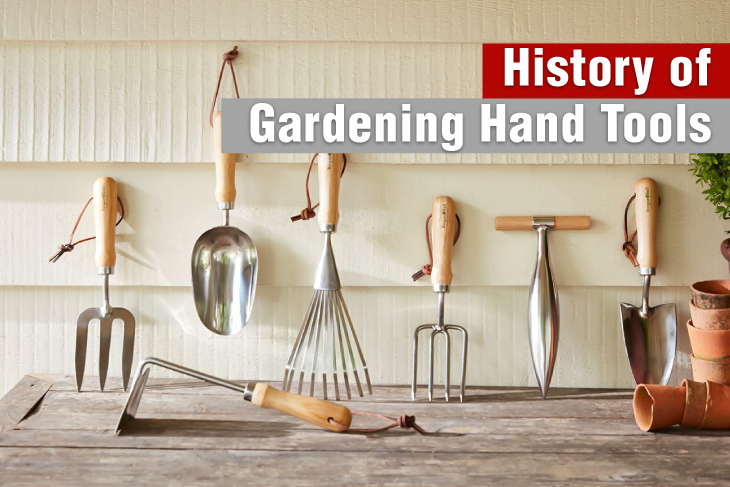
Speaking of the first garden tool, it is good to mention the microlith, the mother of every tool. It consists only of a sharp stone on a wooden or bone handle. It was meant to meet many of the primitive human requirements, some of which were digging, clipping, and cutting plants.

To be more specific on the gardening tools, we should mention rakes as one of the oldest gardening tools. The first generation of rakes dates back to 1100 B.C. in China, used both in harvesting and clearing the fields.
Bulk hand tools that Level Up Your Tool Inventory
Since Chinese people use the farming harvest to keep life going, China has made a lasting impact on the gardening tools industry. The invention and development of seed drills and wheelbarrows were also in China at the time of the Han Dynasty. The invention of the first cast iron shovel is credited to the patriot American captain, John Ames, in the late 18th century.
The Roman arts show the existence of the first pruning knife, which can cut through herbs, vegetables, fruits, and nuts. The first anvil pruner, nevertheless, was patented and produced by Walther Schröder in Kiel, Germany, in the early 20th century.

Today you can look for numerous hand tools in tool shops in different versions, sizes, colors, brands, etc.
Now on to the nest item on the agenda: woodworking tools.
History of Woodworking Hand Tools
Throughout history, hand tools, timbers, and lumbers have been shaped into different forms, whether as primitive life basics or as modern decorative objects.
Before the late nineteenth and early twentieth century, when common metal nails were invented, even nails were out of wood, let alone other stuff. Hammers, saws, mallets, calibers, planers, squares, and even nails were the steadily transforming woodworking tools. These tools helped the ancient Egyptians, Jews, Romans, Greeks, and all other early civilizations to survive, improve, and form the current modern societies. The oldest tool, a hammer, dates back to 3.3 million years ago in Kenya, which may have been used for breaking animal skulls, bones, shells, and even making jewelry.

After that, hammers took quick enhancement progress and were perfected first by changing in form, size, and application. First, the material of the hammerhead has been made of melted bronze bound with similar bindings to stones. And step by step, we get to steel-made modern hammers. Aside from hammers, mallets come always into use, especially in woodworking. They work exactly like a hammer to fit wood screw vices into place.
The other most popular woodworking tool in the list of ancient hand tools is a saw. The tool has been around but didn’t stand out until the middle of the 17th century. Saws took a gigantic leap in 1650 and improved with the invention of the steel hand saw, to a great extent. The story that can be told within the scope of a few lines required thousands perhaps millions of years for its slow evolution and completion.
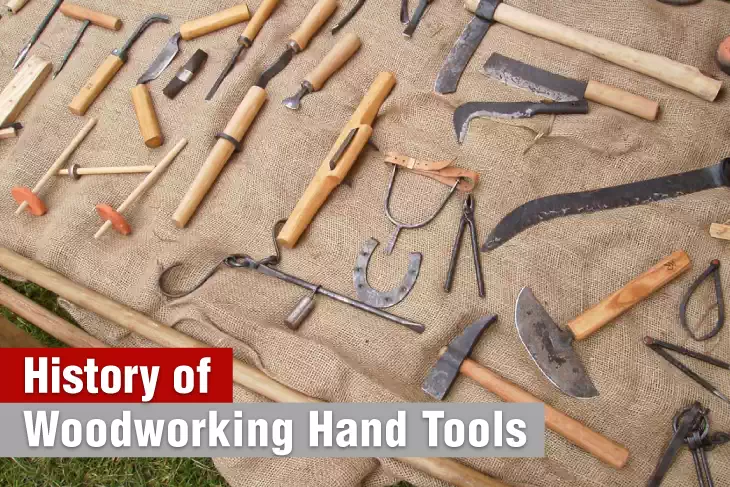
History of Wood Carving Hand Tools
These tools are specialized for artistic work and have more limited use than woodworking tools in general. The hand tools evolution tells us that first men used these tools to carve wooden objects for rituals and functional purposes.
This form of art bloomed during the Renaissance era. Tools like chisels, gouges and mallets were used for making sculptures and other elements. Wood craving is still popular to this day and artists use these tools to create figures, reliefs and even useful objects like glasses and spoons.

History of Spanners
A spanner is a type of hand tool, that is used to turn various types of nuts and bolts. Hand tools history shows that modern spanners was found in the 15th century. Each blacksmith used his own unique form of a spanner in size and shape. They were used to clamp pipes, connecting different pieces of an armor suit, and wind up crossbow strings as they could tighten the strings tauter than any human being.
Later on, in the 18th century and after the Industrial Revolution, the standard-sized factory-made cast-iron spanners replaced the confusing market of blacksmith spanners. Although spanners were used in different industries, they weren’t patented before the 19th century.
Astonishingly, a lot of spanners’ inventions were patented in the 19th century. Daniel C. Stillson, a steamboat fireman, in 1870 had a patent for the invention of a spanner.
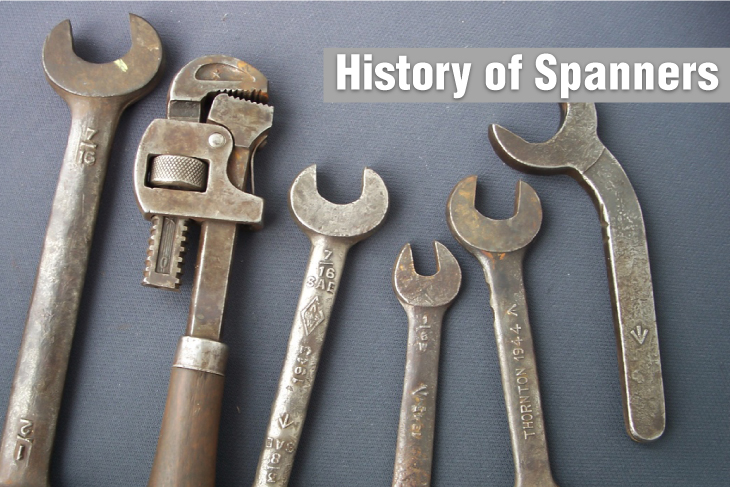
History of Pliers
The history of hand tools that provide the operators with the lever principle goes back to the Stone Age and Homo Sapiens. They used two crossed bones to grip the fire. It shows they noticed how easy they could grip the heavy stuff utilizing the lever principle. The concept that helped inventing the first pliers.
There is also another surviving old picture of the ancient pliers from Hephaestus, the Greek Technology, Fire, Blacksmiths God, who made all the weapons of the Gods in Olympus. One of the earliest modern types of pliers was made by the Lineman’s Pliers, which came about in 1857. The Danish immigrants, who founded VISE-GRIP pliers in 1924, reached another milestone in the hand tool industry history. Pliers are still on track and evolving.
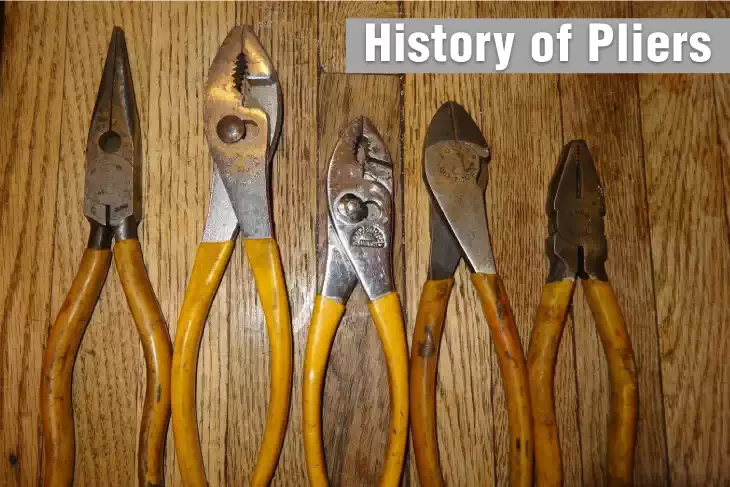
Tools have affected crafts, warfare, construction, and arts, and continue to improve our modern era. But the most challenging topic that the customers are facing is selecting the best hand tool brands to buy from, especially when you’re not a craftsperson or a tool enthusiast.
History of Cutting Hand Tools
From the early humans who needed to hunt and prepare the food, later on for cutting wood to make fire, till later and making sculptures and now that they’re vastly used in different industrie; human being has always been using cutting tools.
In ancient cultures like the Greeks, Egyptians and Romans, using blades for cutting purposes was common. Later on, man was able to devise sharper and more durable blades. With time passing by, they became more and more specified for different applications.
To this day, cutting tools continue to evolve. So let’s get to know some of the best hand tool manufacturers.
Top 10 hand tools manufacturers

Here’s a list of top ten manufacturers for hand tools:
- Stanley Black & Decker hand tools manufacturer
- Ronix best hand tools manufacturer
- DeWalt hand tools manufacturer
- Milwaukee hand tools manufacturer
- Estwing hand tools manufacturer
- Makita hand tools manufacturer
- NWS hand tools manufacturer
- Festool hand tools manufacturer
- Bosch hand tools manufacturer
- Bernstein hand tools manufacturer
An Overall Look
The evolution of hand tools gives us a great insight on where we started, given where we are right now. The need to use tools is an ancient need, answer to which became more and more complex, intricate and functional.
FAQs
Who made the first hand tool?
It’s not easy to pinpoint who made the first hand tool as it has not been recorded but the evidence show that early humans started shaping stones and woods to answer their different needs.
What was the first hand tool?
Oldowan tools, sharp-edged stones, are evidently one of the first tools that date back to the Lower Paleolithic era.
When were hand tools first used?
Long before recorded history, prehistoric humans used tools to survive and adapt their environment to their needs.

Sara
7 November 2020
